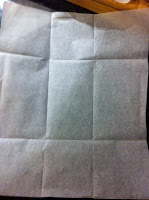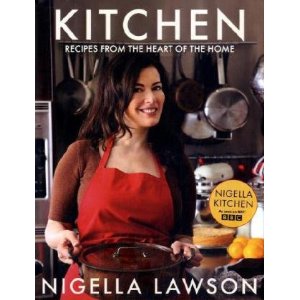I have applied to the third series of the British Bake Off but having signed a form to say I can't discuss it I won't be mentioning it on here, however I will say this, I'm going to do my damnedest to get on to it this time (after last time being so close!).
In other baking news, I've practised my hot water crust pastry, which I can only compare to a warm clay when it comes to working with it. I followed Paul Hollywood's recipe for it from
here and used beef dripping instead of lard (which is apparently a pork fat I thought it was generic animal fat). I tried to roll out the pastry but it proved too tricky to manage; it decided to stick to the work top and refuse to be peeled off so I had to research other techniques to make the pie crust, and this is where my analogy to clay comes from.
Delia recommends taking two thirds of the dough for the pie crusts and reserving the remaining third for the lids, then to use your fingers to shape the crusts. This method worked really well.
I took the 2/3, divided them into 6 equal balls (I didn't weigh them to ensure absolute equality, that is going a bit overboard I reckon), and popped each ball into a muffin pan hole.
My usual muffin pan was set to one side in favour of this funky new contraption I found in Lakeland
here. I heartily recommend it for dishes such as this, the greatness of it is that it has straight sides and loose bottoms! This made it from perfect pork pies, or in my case layered vegetable pies.
Using my fingers I pulled and shaped the dough to fit the tin, pushing it into the corners to give a crisp 90 degrees. I made sure to pull the dough up over the top of the case to help form a decorative seal when the lids were put on. My fillings were various layers of roasted vegetables, that I had cooked before hand so they had shrunk already, and then I took 1/6 of the reserved dough and flattened it between the palm of my hands to make a disc for the lids; sealed it up and brushed with egg wash. I used a knife to make a hole in top which would let the steam out and also allow me to pour in a jelly made with vegetable stock.
These photo's show you how they turned out! The layers were, courgette, aubergine, roasted red pepper, onions, mushrooms and a sun dried tomato at the top. They were fantastic and I recommend you have a go at making them.
The one below is an example of where it didn't work, the vegetables were raw when I put them in and as they cooked they shrank. This left a massive hole at the top of the pies filled with nothing. Cooking the veg before hand helped solve this.
Alchemy
This weeks alchemy is based on that traditional recipe of a cinnamon bun. Instead of a the plain cinnamon and muscavado sugar filling, I decided to up the ante and change it to sour cherries, pecans, cocoa powder, cinnamon, ginger and muscavado sugar. This produced a rich, gooey, treacly filling which went down a storm. That was lucky too as I didn't actually try it before I unleashed it upon the unsuspecting!
Glazed with an apricot jam glaze, they were very very delicious.
Recipe:
For the dough
275ml of luke warm water
5g of dry active yeast (not that instant yeast you get in sachets, this is the yeast you may find in a little tin).
4 tbsp of granulated sugar
600g strong bread flour (white works best, wholemeal is nice, but the buns are very heavy)
1/4 tsp salt
175ml warm milk
75g of room temp, soft butter
To make this dough weigh the water and the yeast in a jug (1ml of water weighs 1g which is handy!), hitting the zero button between each addition. Put one of the 4 tbsp of sugar in to the lukewarm water (stir to dissolve it), along with the yeast and set it to one side to allow the yeast to activate and start frothing away. In a large bowl, stir the flour, remaining 3 tbsp of sugar, salt and also the butter (which should quickly rub in due to its soft nature).
When the yeast has frothed up and proven it's alive, pour this into the flour mix. using your fingers mix it all up and add enough of the milk to just make sure you get all the rest of the dry ingredients. You may not need all of the milk.
Turn the dough out on to a floured work top and start kneading. Knead for about 10 minutes by pushing away from you with the heel of your hand and pulling it back towards you with you fingers. What you are doing when kneading is activating the gluten. Gluten is a lovely molecule, key to baking. In bread you want it to form long elastic strands which give an airy texture to trap the CO2 made by the yeast as it feasts on the sugar; this is the opposite of pastry where you want to minimise the gluten activation!
The way I tell if the dough is ready is by gathering the dough into a ball using the outer edges of my hands turned inwards. I scoop and turn from the bottom of the dough which pulls the top down taught like a drum skin. Then I press the top with my finger and if it springs back quickly you know it's about ready.
After this, place the dough ball into a lightly oiled bowl and turn it so as to cover all the dough with a light sheen of oil (flavourless oil for this sweet dish). Leave it somewhere to double in size, the temperature will affect the speed this happens at.
Preheat the oven to 200C and line a deep baking dish with paper. Take your risen dough and knock it back by punching it! Then stretch your dough out with your hands into a large rectangle (I'm not sure how big really, but maybe 30cm long and 20 cm wide). Then melt some butter and brush on to the dough (this helps the sugar mix adhere).
in another bowl mix up sugar, sour cherries, pecans, cinnamon, ginger, cocoa and a little salt to taste. Sprinkle this over the buttered dough and then roll it up and if you run out make up some more. Roll up from the longest edge closest to you, keeping it tight and trimming off the edges if they flay all over the place. Once rolled tightly, cut it into about 12 thick slices and place them close together int the tin. Use the off cuts to fill in gaps if needed; they also work well as tester balls to see if the buns are cooked.
Bake until cooked and brown then take out of the oven and serve asap.


















































